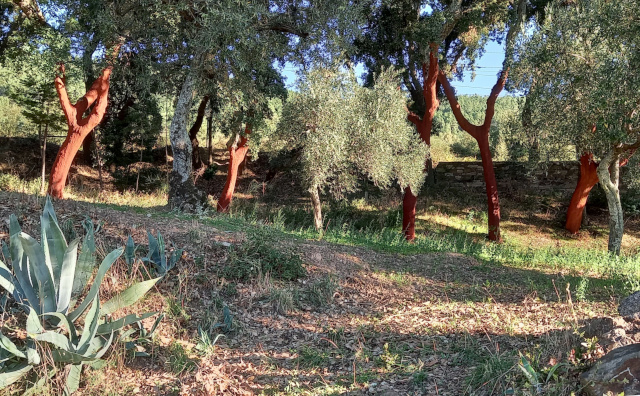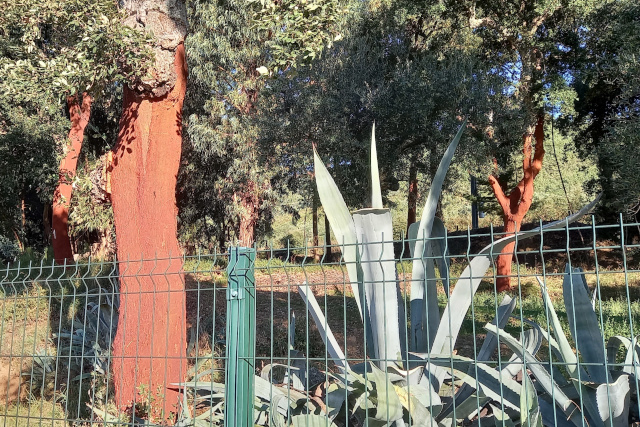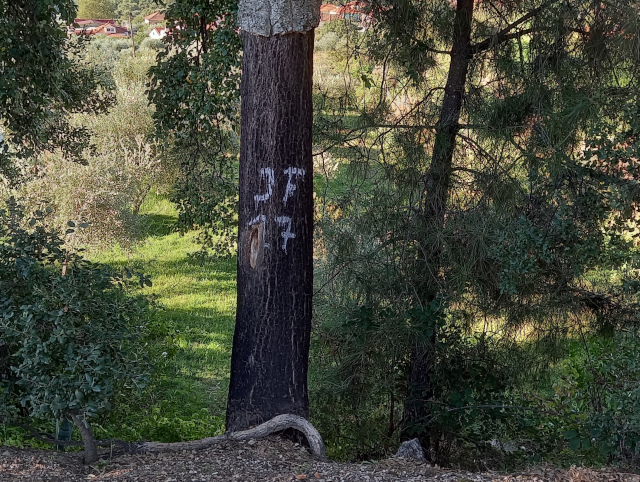... but not as you expect.
As you may be aware, Portugal is the world's major cork producer with over 720,000 hectares (around 1¾ million acres) of cork forest. They produce around 40% more than Spain, the next biggest supplier.
Cork is a wonderfully versatile material, impermeable, buoyant and fire retardant. It has many more uses than just wine stoppers - we can find handbags, purses, hats, and even shoes in the shops. It is used for flooring and insulation and some specialist applications.
The cork bark is harvested usually between May and August from trees that are at least 25 years old. It is a skilled job that does not harm the tree if done properly. The tree is then left for 9 to 13 years to replenish its bark for the next harvest.
There is much more to it than just that, but the 'extractors' who cut and harvest the bark were working in our area a few months ago, the trees along the roadside to our house and in the land behind the workshop were processed.

The new bark growth starts quickly, turning the trunks red as the protective layer is rebuilt.

After a year or so the bark becomes darker and, except for the ´necklace´ ring where the cork was cut, looks quite normal. The tree in the next image was worked on in 2017, so has 4 years of growth so far.



